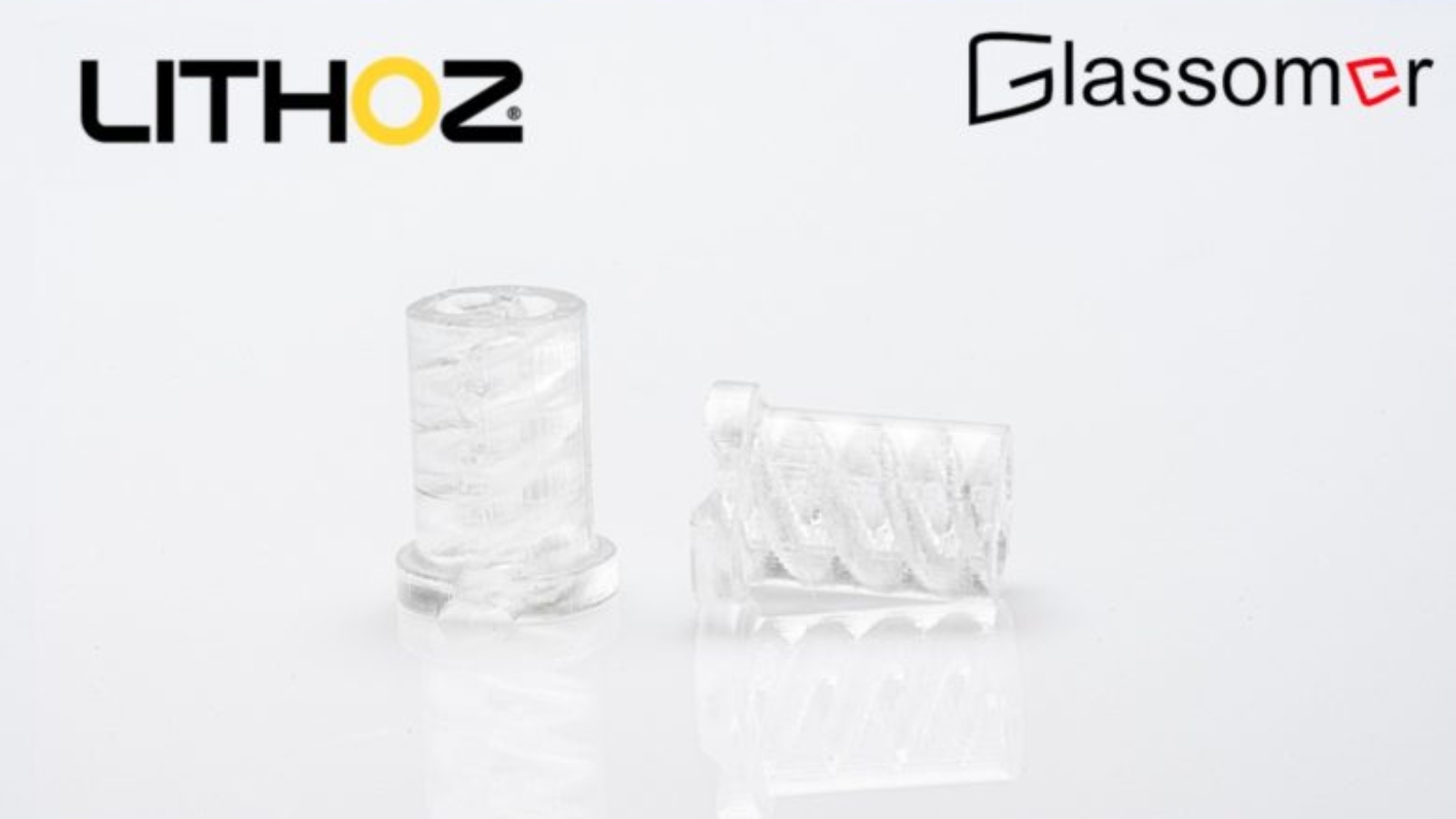Following extensive research in collaboration with Glassomer, a German-based glass manufacturer, Lithoz has unveiled its most recent material, ‘LithaGlass powered by Glassomer’. Glassomer recognized Lithoz’s cutting-edge Lithography-based Ceramic Manufacturing technology as the sole process capable of refining and 3D printing their material with unparalleled precision and intricacy. This quartz glass-based composite slurry marks a groundbreaking milestone for both partners.
This latest innovation enhances Lithoz’s portfolio of slurries, complementing multiple successful material releases and two novel technology introductions within the past year. The design versatility of 3D printing merges with the sought-after properties of high-performance fused silica glass, encompassing mechanical stability, high thermal and chemical resistance, low thermal expansion, and resulting high thermal shock resistance. Since LithaGlass more closely resembles a ceramic than standard glasses such as soda lime glass, it also possesses the favorable material characteristics of fused silica glass, including low thermal expansion and high thermal shock resistance.
Manufacturing on Demand
This significant breakthrough is poised to impact various fields, with both companies eagerly anticipating further advancements in ceramics, glass, and 3D printing. “Glassomer’s choice of Lithoz’s LCM process as their key technology to achieve this innovation once again proves the sheer potential and flexibility of our system. The new LithaGlass material brings our company one step closer to our vision – finding solutions to every challenge of today with a 3D-printed ceramic answer,” said Dr. Johannes Homa, CEO of Lithoz.
“Our transparent high-purity glass solutions offer enormous potential for many applications, especially for high-stability optical and technical parts. With Lithoz we have a powerful partner to make our glasses available for high precision 3D printing – which will significantly advance science and technology,” said Dr. Frederik Kotz-Helmer, CSO of Glassomer.
The collaboration between Lithoz and Glassomer shows promise of revolutionizing the industry – providing researchers, engineers, and manufacturers with a material that combines the benefits of ceramics and glass, while leveraging the flexibility and precision of 3D printing.
You might also like:
Nexa3D acquires Addifab: The acquisition follows a year of joint go-to-market collaboration between the two companies in both North America and EMEA. The joint sales and marketing efforts resulted in converting dozens of customers from traditional tooling to digital tooling due to the significant time and cost savings associated with this innovative approach. This transformative end-to-end solution combines the best of Nexa3D’s ultrafast 3D printers with Addifab’s high-impact, high-temperature soluble resins to print complex tools that are compatible with any injection molding feedstock, thereby delivering complex tooling at a fraction of the cost and time of other 3D printers or conventional tooling processes.
* This article is reprinted from 3D Printing Media Network. If you are involved in infringement, please contact us to delete it.
Author: Edward Wakefield


Leave A Comment